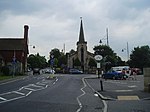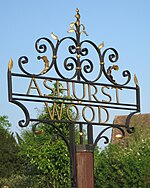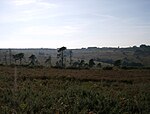Forest Row railway station
Forest Row was a railway station on the Three Bridges to Tunbridge Wells Central Line which closed in 1967, a casualty of the Beeching Axe.The station opened on 1 October 1866 and the buildings were designed by Charles Henry Driver.The station was one of the busiest of the intermediate stations on the line and was enlarged in 1897 with the addition of a new platform on the Down side, connected to the main station side via a footbridge. The station also had a goods shed and two sidings. Ironically, the station's final years saw an increased number of passengers using it as residential development took place around the old Forest Row village. In recognition of the increased patronage, commuter trains from London were extended from East Grinstead to terminate here. At the time of closure, Forest Row was taking over £5,000 per annum in revenue and 200 commuters were using the station to travel to London each day.After the station closed, it was used for the filming of an episode of the children's television programme Do Not Adjust Your Set in August/September 1967 featuring a young David Jason.[1] The site was then sold to a club for over £4,000 and the station buildings were quickly swept away. Nevertheless, a short section of the station platforms can still be found, and the goods shed stands together with other light industrial units. A brick-built coal merchant's office can also be found on Station Road.
Excerpt from the Wikipedia article Forest Row railway station (License: CC BY-SA 3.0, Authors).Forest Row railway station
Station Road, Wealden Forest Row
Geographical coordinates (GPS) Address Nearby Places Show on map
Geographical coordinates (GPS)
| Latitude | Longitude |
|---|---|
| N 51.098888888889 ° | E 0.038611111111111 ° |
Address
Forest Row Fire Station
Station Road
RH18 5DW Wealden, Forest Row
England, United Kingdom
Open on Google Maps








